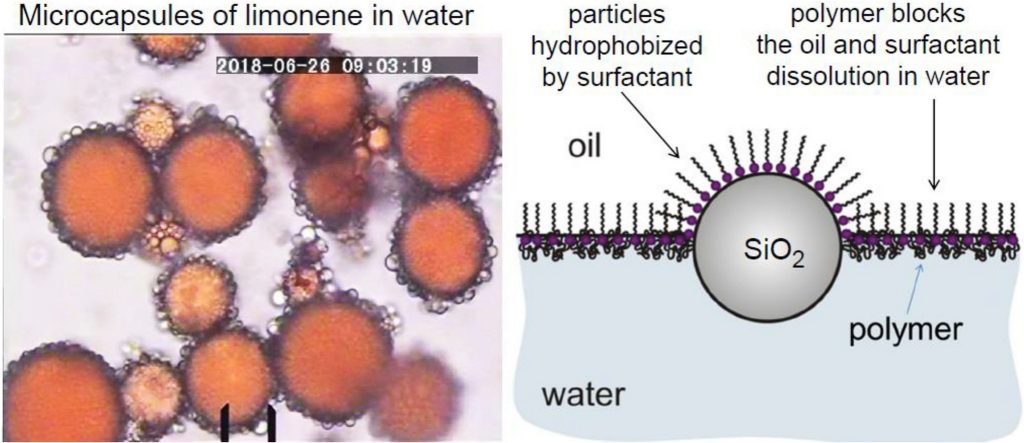Encapsulation of oils and fragrances by core-in-shell structures from silica particles, polymers and surfactants: The brick-and-mortar concept

Colloidosomes provide a possibility to encapsulate oily substances in water in the form of core-in-shell structures. In this study, we produced microcapsules with shell from colloidal particles, where the interparticle openings are blocked by mixed layers from polymer and surfactant that prevent the leakage of cargo molecules. In other words, the particles and polymer play the role of bricks and mortar. For this goal, we used hydrophilic silica particles, which were partially hydrophobized by the adsorption of potassium oleate to enable them to stabilize Pickering emulsions. Various polymers were tested to select the most appropriate one. The procedure of encapsulation is simple and includes single homogenization by ultrasound. The produced capsules are pH responsive. They are stable in aqueous phase of pH in the range 3–6, but at pH > 6 they are destabilized and their cargo is released. With the optimized formulation of silica particles, polymer, oleate and NaCl, we were able to encapsulate various oils and fragrances, such as tetradecane, limonene, benzyl salicylate and citronellol. All of them have a limited and not too high solubility in water. In contrast, no stable microcapsules were obtained with oils that either have zero water solubility (mineral and silicone oil) or higher water solubility (phenoxyethanol and benzyl alcohol). By analysis of results from additional interfacial-tension and thin-film experiments, we concluded that a key factor for obtaining stable capsules is the irreversible adsorption of the polymer at the oil/water interface. The hydrophobization of the particles by surfactant adsorption (instead of silanization) plays an important role for the pH responsiveness of the produced capsules. The obtained information about the role of various factors for the stabilization of microcapsules, which are based on the brick-and-mortar concept, can be further used to achieve better stability; selection of polymers that are appropriate for different classes of oils, as well as for the production of smaller capsules stabilized by nanoparticles.

